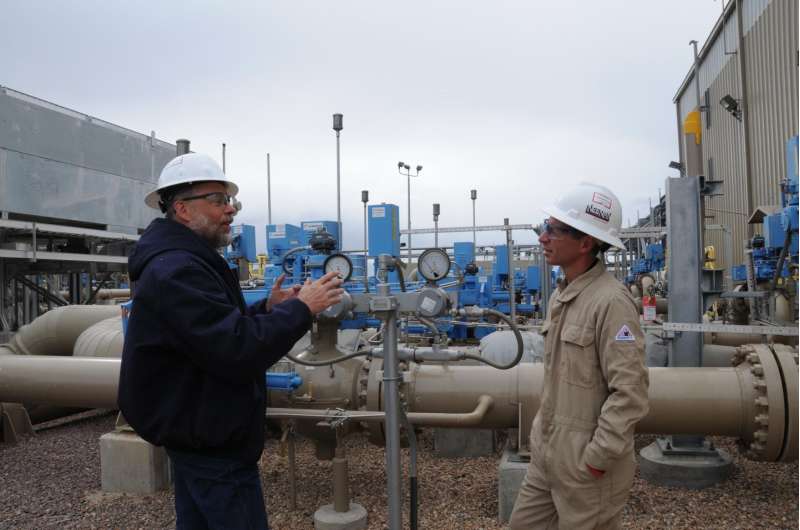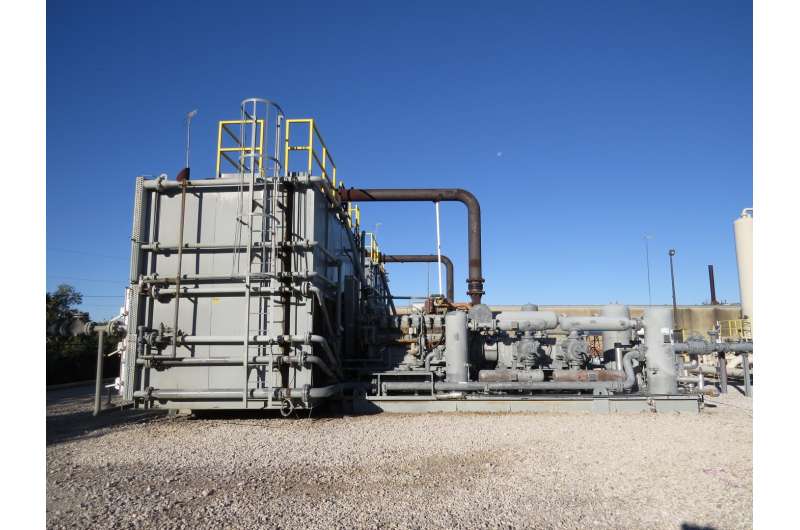New study to characterize methane emissions from natural gas compressor stations

Natural gas, a clean-burning fuel, has significant potential as a "bridge fuel" on a path to a sustainable energy future. However, its climate benefits are highly dependent upon the emission rate of methane from the nation's vast natural gas infrastructure.
Colorado State University, home to some of the world's top researchers on methane emissions, will lead a major Department of Energy project to analyze emissions from a specific part of the natural gas supply chain: compressor stations. The new project will help scientists develop a more complete picture of overall emissions.
Methane is the primary component of natural gas and a powerful greenhouse gas with a global warming potential 84 times that of carbon dioxide over a 20-year timeframe. Although atmospheric methane originates from many sources, no industry has received more scrutiny for emissions than the natural gas sector. Significant quantities of methane are emitted from its million-plus miles of pipeline, half million wells, and thousands of gathering, processing, transmission, storage and distribution facilities.
Daniel Zimmerle, senior researcher at CSU's Energy Institute, will lead the two-year, $1.8 million U.S. Department of Energy-funded project. CSU, engineering firm AECOM and industry partners will conduct a 20- to 26-week field campaign focusing on natural gas gathering compressor stations.
Natural gas from wells is "gathered" into pipelines and boosted in pressure at compressor stations for transport to downstream processing plants and on to the transmission system. The CSU study is expected to measure emissions from 80 compressor stations nationwide and more than 300 individual compressor units.
"Industry partnership is critical to this type of study," Zimmerle said. "The study team needs facility access to make detailed measurements, and the partners also provide key data about operations at the facilities."
The CSU team includes co-principal investigator Anthony Marchese, professor of mechanical engineering, who previously led an Environmental Defense Fund study to measure methane emissions from gathering and processing facilities.

Marchese's prior study (co-authored by Zimmerle) looked at 114 gathering compressor stations and 16 processing plants in 13 U.S. states. Twenty percent of those facilities showed methane emissions - including both leaks and non-leak sources - of more than 1 percent. The study concluded that the gathering and processing sector of the natural gas system was under-represented by a factor of 8 in the U.S. Environmental Protection Agency Greenhouse Gas Inventory. As a direct result of the CSU work, the inventory was updated in 2016, and gathering operations now represent 27 percent of all methane emissions in the current inventory.
"This new study 'fills in the blanks' of our previous study," Marchese said, noting that the previous study used downwind techniques to measure entire facilities at one time. "We'll get a better view of what types of emissions sources influence the facility-level emissions, component by component."
The newly funded study is in response to a DOE-outlined need for characterizing "leak rates and leak frequencies for compressors at boosting stations, including disaggregated detail to reflect unique characteristics of different compressor types (e.g., wet seals vs. dry seals)."
The results of the study will also inform future versions of the EPA Greenhouse Gas Inventory, which now employs the CSU-derived facility-level emission rate for gathering facilities but does not yet include component-level emissions rates for these facilities.
The new study will employ methods used during another previous CSU study, led by Zimmerle, that looked at transmission and storage facilities, which take natural gas from gathering and processing plants to distribution companies or other end users.
The CSU researchers' goal is to build a national model for methane emissions, and use that model to account for the mix of station types and activities when evaluating emissions nationally.
"We'll go to older basins, new basins, we'll look at dry gas, wet gas, different production styles - all these variations," Zimmerle said.
Provided by Colorado State University















